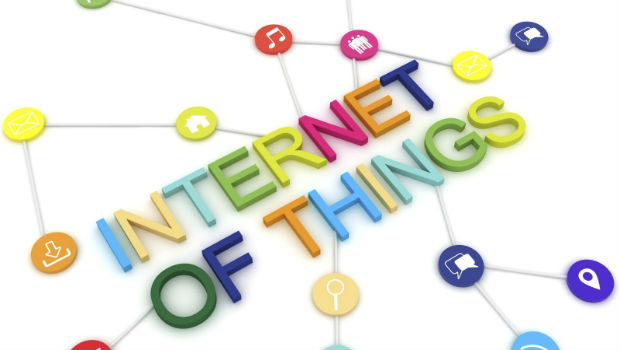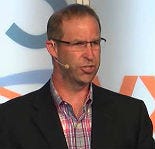How do you make money in IoT?

 **Editor’s Note: Register now for the Business Success Symposium Preconference, sponsored by Verizon, as part of your Channel Partners Conference & Expo package.**
**Editor’s Note: Register now for the Business Success Symposium Preconference, sponsored by Verizon, as part of your Channel Partners Conference & Expo package.**
How do you make money in IoT?
 Natasha Royer Coons, managing director of TeraNova Consulting Group, and Bryan Merckling, CEO of THINaër, will speak at the Channel Partners Conference & Expo in Las Vegas about how to create a business model for this burgeoning technology.
Natasha Royer Coons, managing director of TeraNova Consulting Group, and Bryan Merckling, CEO of THINaër, will speak at the Channel Partners Conference & Expo in Las Vegas about how to create a business model for this burgeoning technology.
The session is titled, “Capitalizing on IoT: A Marriage of Technology & Business Objectives,” and is part of the Business Success Symposium on April 10, the day prior to the full conference.
Greg Dixon, chief technology officer of ScanSource, will moderate the panel.
We spoke to Royer Coons and Merckling about some of the highlights of their upcoming talk. The Q&A has been edited for length and clarity.
Channel Partners: What is one specific opportunity for growth/revenue within IoT?
 Natasha Royer Coons: There are a lot of opportunities in fleet tracking. The Federal Motor Carrier Safety Administration (FMCSA) has mandated the adoption and use of electronic logging devices (ELDs) by all drivers required to complete paper records of duty status. The rule kicks in over the next couple of years and applies to commercial trucks and buses with a few exceptions such as short-haul drivers using time cards. The technology will allow fleet managers to capture fuel level, hours of service, miles and other data, which will enable them to better manage and safeguard their fleets.{ad}
Natasha Royer Coons: There are a lot of opportunities in fleet tracking. The Federal Motor Carrier Safety Administration (FMCSA) has mandated the adoption and use of electronic logging devices (ELDs) by all drivers required to complete paper records of duty status. The rule kicks in over the next couple of years and applies to commercial trucks and buses with a few exceptions such as short-haul drivers using time cards. The technology will allow fleet managers to capture fuel level, hours of service, miles and other data, which will enable them to better manage and safeguard their fleets.{ad}
In addition, Driver Inspection Video Reports (DIVR) will become commonplace in verticals including fleet, law enforcement, public transportation and school districts, among others. This market – anywhere you would want video for liability, safety and security reasons – is set to explode.
The above is only one example but there are many vertical markets in addition to transportation, such as health care, energy, finance, retail and more.
Bryan Merckling: Believe it or not, one of the biggest Internet of Things (IoT) opportunities is figuring out what to do with all of the “things” within industries that already exist. Not the new fancy connected devices, but the significant capital expenditures that have been around — think heavy machinery and purchases that are still being depreciated. What’s the role of legacy assets in a smart and connected world? We’re focused on making these legacy assets both smart and connected, to improve business operations and efficiencies, thereby extending the …
{vpipagebreak}
… lifeline of existing investments. While the rest of the industry spins around looking for the next “smart thing,” we can deliver on the promise of IoT today, deploying our solution to the assets right in front of us — helping our customers tag, track, manage and locate the assets they already own.
CP: What misconceptions or obstacles prevent partners from being successful with IoT?
NRC: It might seem obvious but I think it’s critical to collaborate with people who are really familiar with the space. Quite simply, you don’t know what you don’t know. The air time is straightforward: you pick your carrier. The platform is a little more challenging but not too difficult. The hardware is the biggest hurdle. You need to determine whether to build or buy. You have embedded modules, sensors, antennas, power supplies, deployments in buildings and in vehicles. It’s complex so it’s critical to lean on people who have expertise.
BM: Making it too complicated! We find the term IoT, itself, means different things to pretty much all of us. So the confusion is surprising. Vendors are providing solutions that vary tremendously, from the problems solved, to the technology used and the complexity of implementation and maintenance. Not to mention cost! Pick partners that can clearly tell you what they are doing – why and how. For our partners to be successful, they need to be able to understand what we’re doing. That’s why we break it down and keep it simple. We talk about what we can deliver today — not future promises that are light years away and cost zillions of dollars. We help companies securely tag, track, manage and locate all of their assets in real time. We do this today around the country. In a way that is cost-effective and scalable. Our solution is straightforward. Easy to understand and install. It doesn’t even require a company’s IT department to get involved, so that also saves everyone time and money, and lots of headaches. At the end of the day, we do what we say we can do. That’s what we all should be able to expect from a successful partner.{ad}
CP: What IoT success stories have you witnessed in proximity to your own company?
NRC: Our Telematics partner recently won an RFP with a large insurance company. The insurance company is planning to roll out an IoT solution for all of the vehicles in their fleet. The end goal is to capture all kinds of data or diagnostics to measure driver performance and essentially create a FICO score for drivers. In fact, there is a lot of IoT activity in the usage-based insurance business right now.
Another partner of ours recently closed a deal with a taxi company in New York City to use a 4G LTE hotspot that can be connected to any credit-card swiper, POS terminal or all-in-one POS system via Ethernet and Wi-Fi. It’s available on Sprint’s nationwide network and was designed specifically for …
{vpipagebreak}
… verticals such as restaurants, retails and SOHO. Paired with a 4-port switch to connect multiple devices, terminals and PCs — it is plug and play.
Wireless backup is an opportunity that is here and now. Every channel partner should include a wireless-backup solution on all network proposals. We rolled out a wireless backup for a channel partner for rural egg farms where the wireline network [was] highly unstable. The cellular equipment, antennas, pooled data across all sites and monitoring/helpdesk support is sold as a, MRC without any CapEx requirement from the client.{ad}
That is what makes IoT so exciting. It’s moving fast and giving birth to a new era of automation that will result in better operational and financial outcomes for businesses everywhere. Channel partners who are able to advise their clients on IoT only increase their earning potential and enhance their value as trusted advisers.
BM: Companies such as Gartner, Cisco and others project IoT to exceed $11 trillion by 2025! A huge number, making IoT the largest technology opportunity in a generation. That alone is mind-boggling. Within all of this, we’re excited that we’ve found a way for to give legacy assets a role in a smart, connected world. We’ve found a way to make sure huge capital investments aren’t suddenly obsolete! The most amusing use case I have seen has to be the Slushy/margarita machine. Tracking the temperature of the cooling container along with the movement of the compressor is going to allow the machine to raise its hand as soon as it begins having cooling issues and request service before there is ever a gap in its ability to create our favorite drinks. Maybe it has to do with the fact we’re getting a bit older ourselves, but it’s pretty great to find a way to help these existing assets leapfrog into a new technology paradigm.
Read more about:
AgentsAbout the Author(s)
You May Also Like


